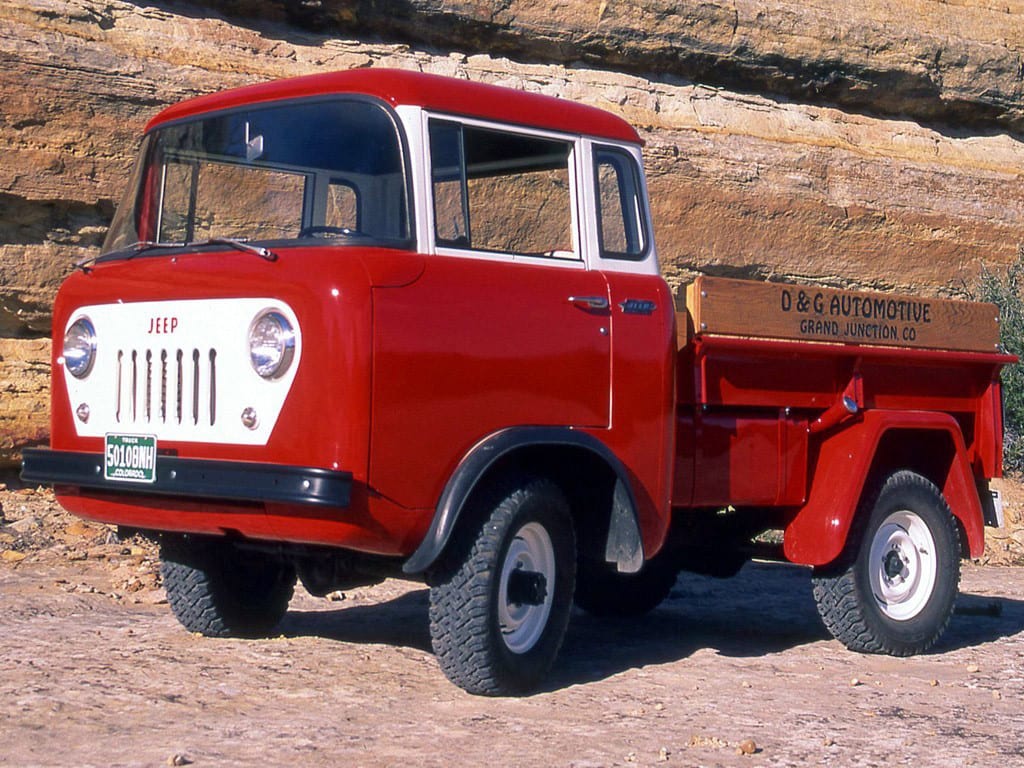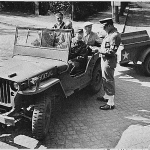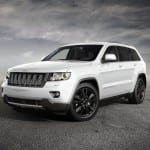Jeep is one of the most well-known and recognizable brands on the road, and many drivers are familiar with their variety of models, like the Wrangler, Cherokee, and Renegade. However, there are a number of nameplates produced by the brand that never received that same popularity, leading them to being forgotten today. Luckily, we’ve dug up some of the lesser-known Jeeps for your reading enjoyment.
Unless you’re a Jeep enthusiast, you’ve probably never heard of the models listed below. So you probably won’t find these vehicles at a Jeep Wrangler dealer in Miami (or anywhere, for that matter), but we can still appreciate the vehicles for what they were…
Jeep FC-150
As rival companies looked to compete against Jeep in the 1950s with their own four-wheel drive vehicles, the brand was hoping to create a unique vehicle that wasn’t offered elsewhere. The result? Jeep’s first new vehicle since 1947, the FC-150 (otherwise known as the “Forward Control” and “Flat Front”).
Marketed as a vehicle that could serve both civilians and military, the Jeep was engineered by A.C. Sampieto and based on the popular CJ-5 (particularly the vehicle’s chassis). Riding on an 81-inch wheelbase, the Jeep included the Hurricane inline-four engine, which was capable of producing 75 horsepower. The engine was connected to a Borg Warner three-speed manual transmission, and the Jeep also included the brand’s famous “Hi-Lo” 4-wheel drive system, allowing the driver to switch between 2- and 4-wheel drive.
As the Hagley Museum and Library’s website describes, the FC-150 was best known for it’s sleek look. The “Safety View” cab made it stand out from the rest, as there was a distinguishable “cab-over-engine” design. The Jeep was commended for it’s roomy interior (as the FC-150 was designed for “comfort”) and remarkable amount of window glass (as the FC-150 was also designed for “visibility”). To make the cabin more accessible, the brand also included “wide doors, concealed steps, and rubber front fenders.”
The Jeep’s versatility also set it apart from the rest, as the FC-150 offered excellent off-roading capabilities for the time. The Museum’s website notes that the Jeep was “durable and could take a lot of abuse,” making it an excellent selection among those who needed a vehicle for hauling junk around.
Despite receiving solid reviews following it’s release in 1957, the sales of the truck ended up being underwhelming. The vehicle was ultimately discontinued in 1965, and due to the lack of sales, you won’t see many of the FC-150’s lying around today.
2001 Jeep Willys2
You wouldn’t have seen this vehicle lying around a Jeep lot, so we understand if you’ve never heard of this concept model. The idea for the Willys2 was a result of Jeep’s decreasing hold of the “rugged, American-brand” market, as the Hummer was slowly gaining steam. Around since 1992, the Hummer (or, as it was previously known when owned by AM General, the M998 High Mobility Multipurpose Wheeled Vehicle) was officially taking it’s hold of the power, off-roading market.
At the same time, Jeep seemed to be more focused on their “suburban soft-roader du jour,” as AutoBlog.com described. Looking to develop a vehicle that could compete with the Hummer, Jeep decided to refer to an old friend. A team of engineers decided to reboot the Willy, which was the iconic vehicle that played an important role during World War II. As AutoBlog.com writes, the brand would be looking to create a smaller (but equally powerful) Jeep that would run for less than the $14,000 Wrangler.
The Willys2, the most innovative of the concept Jeeps, was unveiled at the Tokyo Motor Show in 2001. The Willys resembled a “rescue vehicle,” coming with an assortment of features, including “salad-bowl-sized driving lights on its roof rack [and] go-anywhere 21-inch wheels.” There was also an “all-aluminum frame molded to carbon fiber body panels,” leading the blog to surmise that the vehicle would have been more expensive than anticipated.
Instead, Jeep released the Compass and Patriot in 2007, with both vehicles priced around $15,000. The two small vehicles were viewed as “imitators,” hurting their public perception. The vehicles were ultimately discontinued in 2012, and the Willys idea has been shelved indefinitely.
1993 Jeep Echo
Long before the 2015 Jeep Renegade, the brand had tried to produce a “baby Jeep” (as described by Evan McCausland of AutoMobileMag.com). This led to them pitching an idea at the Detroit Auto Show: the 1993 Jeep Echo. Marketed towards “the environmentally-aware generation,” the Echo’s body structure was composed of aluminum, wrapped in plastic panels. This made the vehicle 100-percent recyclable.
Coming in a 143 inches long (or, for those counting at home, nearly two feet shorter than the 2015 Renegade), the Echo featured a two-stroke, all-aluminum, 1.5-liter three-cylinder engine, capable of producing 85 horsepower and 120 ft-lbs of torque. Even then, the engine still weighed less than the typical 2.0-liter four-cylinder Jeep engines. Furthermore, the engine included both “direct fuel injection” as well as a “supercharger.”
Jeep would travel to various auto shows to display their concept, but they ultimately didn’t produce a similar vehicle for nearly 15 years. Finally, the Jeep Compass and Jeep Patriot were released in 2006, somewhat satisfying the brand’s desire for a small vehicle. The two-stroke engine saw it’s demise around the same time. Although it was rumored to be included in the Dodge and Plymouth Neon, it was eventually trashed for financial reasons.
The Echo may have never made an appearance on a car lot, but it’s not gone forever. It lives on within Chrysler’s “historical vehicle collection,” meaning it shouldn’t even be forgotten.
Jeepney
The Philippines’ form of public transportation, the Jeepney fleet was originally constructed of leftover Jeeps from World War II. Of course, they’ve evolved as the brand has evolved, but the familiar Jeep body can still be seen bussing along passengers today.
The biggest modification is the removal of rear doors, allowing passengers to easily get in and out. However, not all Jeepneys are doorless, as vehicles traveling on expressways are required to have rear doors. Another notable change is the removal of the seats and the inclusion of benches, allowing more people to fit into the vehicle. Some Jeepneys are capable of sitting anywhere from 20 to 40 passengers!
The industry continues to grow rapidly, and manufacturers have already come up with ways to integrate the Jeepney with modern technology. These changes include the addition of a brand-new engine and drivetrain, air-conditioning, and large interiors. There’s even hope that electric Jeepneys will hit the road in the next couple of years.
You’ll unfortunately be very hard pressed to find any of the vehicles lying around a Jeep lot. However, you’ll still be able to see some features of these SUVs on today’s models. These Jeeps may not be available, but they’ve clearly made an impact on the brand.
We can’t guarantee that you’ll ever come across one of the four vehicles above. Regardless, we’re sure you’ll be content with whatever Jeep you do ultimately purchase. If you decide to be a bit meta and opt for one of their more unique models and packages, you may find yourself in possession of a rare vehicle years down the line.








